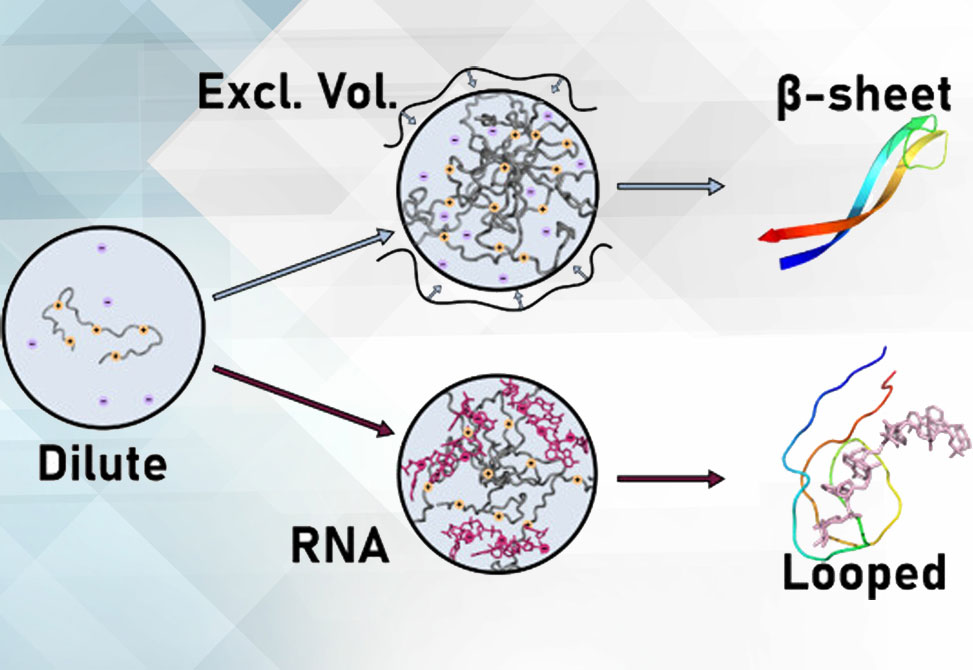Biomolecular Condensates
Reflecting work in the Baiz Lab
Biomolecular condensates provide a mechanism for compartmentalization of biomolecules in eukaryotic cells. These liquid-like condensates are formed via liquid–liquid phase separation, by a plethora of interactions, and can mediate several biological processes in healthy cells.
Expansions of dipeptide repeat proteins, DPRs, in which arginine rich DPRs like poly-proline-arginine, PR, and poly-glycine-arginine, GR, partition RNA into condensates can however induce cell toxicity.

The Baiz Group
Published in JACS, researchers in the Baiz Group at the university of Texas at Austin use (GR)20 as a model for biological poly-GR and condense it using either excluded volume interactions with polyethylene glycol, PEG, as a crowder or direct electrostatic interactions with RNA oligomers. Using two-dimensional infrared, 2D IR, spectroscopy, the group members observed that (GR)20 condensed through an excluded volume forms β-sheet structures, whereas (GR)20 condensed with RNA forms loops.
The Baiz group also investigated local hydrogen-bond dynamics in the condensate and compare the measurements with molecular dynamics simulations. Hydrogen bond lifetimes undergo a marked slowdown compared to dynamics in the dilute phase. This is representative of confined water within the percolated networks inside the condensate due to the interaction present in the condensate disrupting H-bond networks.
Overall, these results show that both protein structure and dynamics are inherently dependent on the type of interactions that stabilize the condensates.


